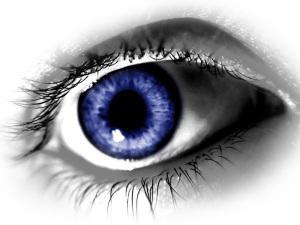Here is another great guest blog from Dr. Frederick Strobl. This time he discusses the very odd syndrome known as Locked-in Syndrome.
Imagine the unimaginable. You awaken to find that you can think normally, but not speak. You try to move your arms and legs, but you are totally paralyzed. You can’t even lift your head off the pillow.
You can see and hear normally except if you look to the side, you have double vision. While completely functional, mentally, you are overcome with dread . . . you are a prisoner trapped inside your own body, locked-in from the rest of the world.

A nurse comes in to check your blood pressure. You can feel the pressure cuff inflate. Suddenly seeing your eyes open, she drops her stethoscope on your legs. You feel that too! She quickly returns with the neurologist. After examining you, he says the fateful words: “She is locked-in, I’m afraid.”
Locked-in syndrome is a rare neurological condition characterized by complete paralysis of the voluntary muscles in all parts of the body except those that control eye movement or blinking. It may result from a massive stroke, traumatic head injury, diseases that destroy the myelin insulating sheath surrounding nerves, and in rare cases, a toxic medication overdose. Individuals with locked-in syndrome are conscious and aware, able to think and reason normally, but are unable to speak or move. In a few cases, patients may regain certain body functions, but the chances for recovery are limited. The damage is located in the brainstem which connects the brain with the spinal cord.
Until the 1960s, people with this condition were considered brain damaged even when their higher brain functions were normal. While locked-in syndrome is better diagnosed today, it imposes a frightening and frustrating experience for the sufferer who can feel sensations of pain, hunger, itching, and the scope of human emotion, but cannot react or readily communicate such needs or desires.
Jean-Dominique Bauby, a French journalist, suffered a massive stroke at age 43. He was diagnosed with locked-in syndrome and learned to communicate by blinking his left eye. Through this method, and with the help of a dedicated assistant who repeated letters of the alphabet to him, Bauby ultimately wrote The Diving Bell and the Butterfly, which was later adapted into a film.
In the last decade, some advances have been made in assistive technologies. These include the implantation of sensors in the brain that allow the patient to move a computer cursor using thoughts or even convert thoughts into speech also through the use of a computer creating the sounds.
Similar to locked-in syndrome is a harmless but frightening condition called sleep paralysis. Essentially, in a healthy patient, the brain awakens from sleep before the rest of the body. Usually lasting for seconds, patients who have experienced this condition have expressed that it would be a fate worse than death.

Frederick (Fritz) Strobl, MD is a neurologist and a Director of the Minneapolis Clinic of Neurology, one of the largest private clinics in the world devoted entirely to neurology. His Dr. Jack Stevens series of medical thrillers includes Presidential Migraines and Greek Flu. His next book, Cyber Death, is due to be released in April 2012. Contact Fritz at [email protected] or visit www.fritzstrobl.net.
Here is an interesting article Fritz submitted on reading brain activity and its possible use in Locked-in Syndrome.

